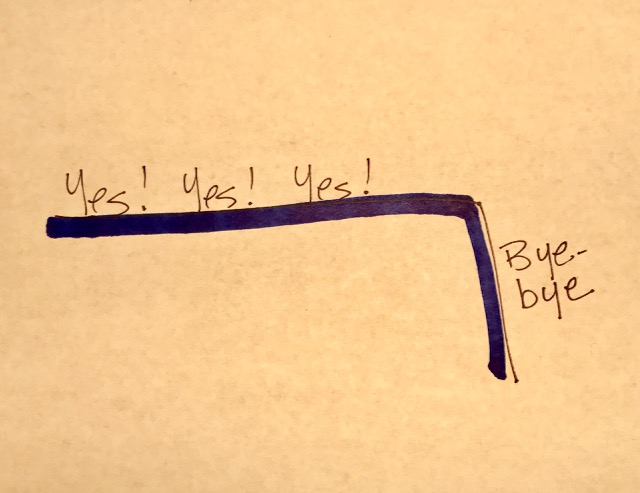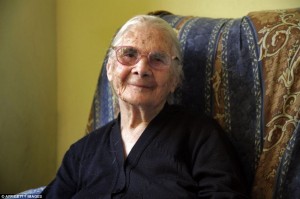Category — Living Counterclockwise
Keep It Moving
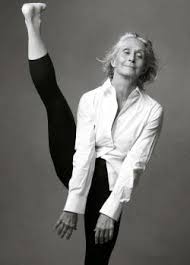
Keep It Moving is Twyla Tharp’s newest book. Nearing 80, vibrant and productive, a creative tornado, a no-nonsense powerhouse, she ruminates on how to live with purpose as time passes.
After the first chapter, gloriously and emboldenly entitled “Take Up Space,” the book devolves into mostly standard generic self-help advice (e.g. take care of your body, take risks, build resilience, etc.). But because it is coming from Twyla Tharp, a woman of enormous energy and extraordinary vitality, it feels authentic (not to mention hard-won), imbued with a deep wisdom—and an engagingly stern attitude—missing from other such “literature” like those perky women’s magazine columns or those mountains of follow-this-fad books.
But it is not the nothing-new-here advice, or the little exercises (I don’t mean push-ups) she offers that has stayed with me, that I want to pass along to you. It is these statements.
To look back is to cling to something well over and behind you. We don’t lose youth. Youth stays put. We move on.
Age is not the enemy. Stagnation is the enemy. Complacency is the enemy. Stasis is the enemy.
Choose to make your life bigger. Opt for expression over observation, action instead of passivity, risk over safety, the unknown over the familiar. Be deliberate. Act with intention.
Evaluate your accomplishments as beginnings rather than endings.
And finally:
Bend in the wind.
Get stronger for the mending.
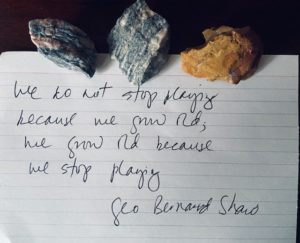
January 15, 2020 No Comments
In it for the L-o-n-g Haul
Rectangularization of Morbidity. It trips lightly off the tongue, does it not?
It does not.
It is the anthem of my life. My motto. My hope for the future. The goal I work toward every day. The bumpersticker I would put on my car if I had a really really long bumper.
What is it?
Simply put: Do all you can to create, nourish and maintain high-level wellness and maximum vitality. Sustain that state for as long as possible. Then die. Or, as I’ve expressed it to audiences when I talk about this:
Healthy, healthy, healthy, healthy, dead.
This is the opposite of how most of us age. We are, most of us, living much longer lives these days. The dramatic increase in life expectancy is heralded as one of 20th century society’s greatest achievements. Life expectancy for someone born in 1900 was 50. Today, in the US, it is 79. (In Japan, it is 84.)
But our healthspan – our years of healthy living — has not increased. That means we are living out the last 5, 10, 20 or even more years of our lives with often debilitating chronic illness(es). The average elderly person in the US is taking five different prescription medications. (For those in nursing homes, the number is seven.)
The third third of our lives – a gift! – is spent without the strength, vigor and energy to live fully, to participate with physical, emotional and creative vigor in the lives of our families, our communities, our nation. There is so very much to do, these days more than ever. We, all of us, young, old and in between need to meet these challenges with enterprise and élan, with zest and zeal, with sustained in-it-for-the-long-haul optimism. How to do that?
Rectangularization of Morbidity.
June 28, 2017 No Comments
Lessons learned from a 3000-year-old olive tree
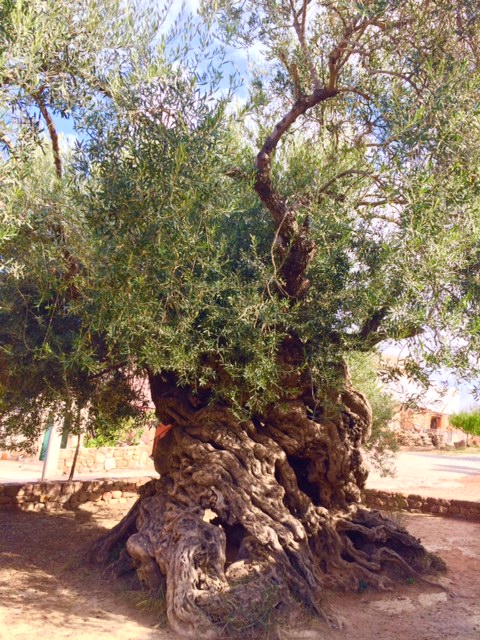 In Vouvres, a village in the mountains of western Crete, there stands an olive tree that is verifiably 3000 years old. When this tree was a sapling, the Iron Age had just begun. The tree is magnificently gnarled, a twisting, turning, ropey, veiny, sinewy work of art that manages to seem both fluid and solid at the same time. Its circumference measures 41 feet. Branches, so many branches, some old and thick, some young and slender, all healthy, all dusty green with leaves, all bearing olives, grow from its massive trunk.
In Vouvres, a village in the mountains of western Crete, there stands an olive tree that is verifiably 3000 years old. When this tree was a sapling, the Iron Age had just begun. The tree is magnificently gnarled, a twisting, turning, ropey, veiny, sinewy work of art that manages to seem both fluid and solid at the same time. Its circumference measures 41 feet. Branches, so many branches, some old and thick, some young and slender, all healthy, all dusty green with leaves, all bearing olives, grow from its massive trunk.
I stood before this tree last week. I couldn’t get enough of it. I walked around and around it. I photographed it from all sides. I peered inside its dark, hollow core. I touched it. I (embarrassingly) spoke to it.
Not out loud.
Okay, sort of out loud.
I asked it to reveal its secrets. How do you survive for three millennia? How do you persevere through all that has come your way? How do you stay so strong, so healthy, so magnificent?
And this is what the Monumental Olive Tree of Vouvres (its official name) told me (not out loud):
**Situate yourself in a place that suits you and grow your roots deep.
**Bend when you have to.
**Be useful
**Give back not just to those who care for and tend you, but to all.
**Keep pushing out new branches. Always push out new branches. Never stop growing.
**And remember the true beauty of age, the complexity and richness, the layering of experience upon experience, the strength and power that comes from that.
“And lady,” the tree said to me, “it’s time to quit talking to trees. Take a hike in the hills. The sun is shining. The bougainvillea is blooming. The air smells like thyme and basil and lavender. Go.”
And so I did.
November 2, 2016 5 Comments
Longevity Tourism
Yes, it’s a thing.
And no, it should NOT be a thing. Let me explain:
“Longevity tourism” involves well-heeled, first-worlders visiting Blue Zones like the little village in southern Italy that I wrote about here. Blue Zones are geographic locations where people live significantly longer, astoundingly healthier lives than the rest of us. In addition to the little villages on the southern Mediterranean coast of Italy, there is Sardinia, the Nicoya Peninsula of Costa Rica and the Greek island of Icaria, among others.
In the emerging business of Longevity Tourism – part of (shoot me now) the “silver economy,” (i.e. moneyed babyboomers), travelers venture to these places on quests to discover the secrets to living long, healthy lives. If you read this blog (and my book Counterclockwise), you know that I am all about living a healthy, vital life. But does Longevity Tourism hold the key?
Come with me as we travel to the sunbeaten village of Perdasdefogu, in the rugged interior of Sardinia, to meet the Melis family, Guinness World Record holders (2012-1014) for “oldest family on the planet.” Consolata (that’s her picture above) lived to 107. Her younger siblings include Claudina (103), Maria (101), Antonio (97), Concetta (95), Adolpho (93) and Vitalio (90).
What’s their secret?
They live, fully integrated, in the multi-generational life of their extended family.
They live, fully integrated, in the life of the village — an isolated, close-knit, sociably community, the same one they were born into.
They live in a culture that expressly treats the elderly with dignity and respect – and doesn’t make a big deal about it.
Families in this area carry a specific gene on their Y chromosome that significantly reduces the risk of heart attack and stroke. The gene pool is “unusually undiluted” because of the isolation of the villages and the family intermarriages.
They are poor. They grew up (and continue to live) hardscrabble lives. The men were goatherders, traversing miles of rugged terrain every day, living almost exclusively on goats’ milk and pistoccu (a thin, crisp local bread). “There was no money,” one nonagenarian explains. “It was difficult to get enough to eat.” Another villager adds, “You exchanged some of your cheese for a bit of bread. If you were having a good month, you got a little meat.”
These are not the “secrets” longevity tourists want to hear.
I’m thinking that we who care about health and wellness should leave these villagers to live their lives while we focus on creating a meaningful, engaged, multigenerational culture, one that we continue to respond to, actively participate in and enhance as we age.
How about that secret?
October 12, 2016 4 Comments
La Dolce Vita
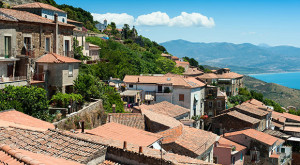 For the past two weeks I’ve been staying a scant 80 miles from the little village of Acciaroli on the Mediterranean coast of southern Italy. For those who track “anti-aging” (that is to say pro-healthy aging) research, that name might sound familiar. This town of barely 700 residents has been the object of intense research. In Acciaroli, one out of 10 residents is over 100 years old. Also, they appear to be immune to chronic illnesses, such as heart disease and dementia. And their circulatory systems could be mistaken for those of 20 year olds.
For the past two weeks I’ve been staying a scant 80 miles from the little village of Acciaroli on the Mediterranean coast of southern Italy. For those who track “anti-aging” (that is to say pro-healthy aging) research, that name might sound familiar. This town of barely 700 residents has been the object of intense research. In Acciaroli, one out of 10 residents is over 100 years old. Also, they appear to be immune to chronic illnesses, such as heart disease and dementia. And their circulatory systems could be mistaken for those of 20 year olds.
Why? What is responsible for such an unusually high number of healthy centenarians? Please, teams of researchers, descend on this sleepy village, apply the masterful tools of 21st century western scientific inquiry and tell us “the secret” so we too can live lives just like the Acciaolians.
Okay, then: Scientists from the San Diego School of Medicine along with colleagues from Rome’s Sapienza University recently spent six months studying the residents of Acciaroli.
First I’ll tell you what they found. Then you’ll see why I think these “secrets” are meaningless to you and me.
Major finding: Acciarolians eat lots of anchovies and flavor everything, every meal with fresh rosemary. Anchovies are packed with heart-healthy omega-3 fatty acids. Rosemary, long been considered a healing herb, has been shown to improve brain activity, prevent cognitive dysfunction and protect against carcinogenic compounds.
Got it. Secret revealed! Eat lots of anchovies. Season everything with rosemary. Live to be 100. Or, better yet, since most people don’t like anchovies, swallow omega-3 pills. And, since fresh rosemary is not so widely used in American cuisine, assume some enterprising nutriceutical company is marketing powdered rosemary in a capsule and down a few of these every morning. Done.
Um, no. The secret to their long lives is: They live completely different lives than we do. They are immersed in a rich culture based on strong and enduring family ties and the healing power of the church, both of which contribute to a sense of larger purpose as well as everyday happiness and satisfaction. The old people live lives fully integrated into the life of the village. Their lives include some hard work but also prodigious amounts of leisure time. Due to the location of the village, everyone walks long distances and hikes through the mountains as part of their daily activity. In the late afternoon and evening, people gather in the cantinas to drink wine or coffee, relax, talk, debate.
Put that in a pill and swallow it.
September 28, 2016 5 Comments
Purpose. Meaning. Life.
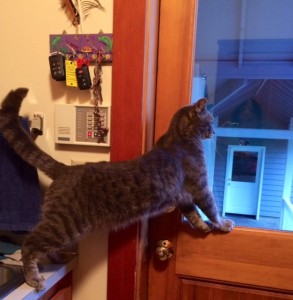 Another day, another load of garbage delivered to my email in-box, the result of my long-standing Google alert for “anti-aging.” For more than 6 years, ever since I first started researching the science of aging for my book, Counterclockwise, I’ve been slogging through these daily “news” (yes, in quotes) items that purport to alert me to the latest and greatest information.
Another day, another load of garbage delivered to my email in-box, the result of my long-standing Google alert for “anti-aging.” For more than 6 years, ever since I first started researching the science of aging for my book, Counterclockwise, I’ve been slogging through these daily “news” (yes, in quotes) items that purport to alert me to the latest and greatest information.
A good 75 percent of the items are about skin creams. Because, you know, the path to an engaged, vigorous, healthy life is surely to smooth out laugh lines. The other alerts run the gamut from the newest superfood (Are people still falling for that? Did we learn nothing from the Great Kale Hoax?) to the ultimate fitness regimen, with occasional tidbits on detoxing, botoxing, fasting, dead-skin eating fish, leech facials and the habits of celebrities far too young to have any experience with aging.
In more than 6 years, I have never ever gotten an alert to a story that suggests that “anti” aging is not a battle against the process of life but rather a positive approach to living life to its fullest, to pushing boundaries, to raising the bar, to living with engagement and joy and…purpose.
Yes, living a life with a sense of purpose may be the ultimate ”anti” aging strategy.
A while back, I wrote about meeting a vigorous, energetic 92-year-old woman who does just that. You may remember that I’ve also written about a related subject: volunteering, which can provide a strong sense of purpose. I mentioned a 2013 study published in the journal Psychology and Aging that found that mid-life adults who volunteered about 4 hours a week were 40 percent less likely to develop high blood pressure 4 years later. Other studies discovered fewer health complaints, higher functional ability, less depression and anxiety, and less incidence of heart disease among volunteers than among matched sets of non-volunteers.
Here’s more evidence: National Institute on Aging-funded research based on more than 6,000 mid-life people found that people with a sense of purpose had a 15 percent lower risk of death, compared to their more aimless counterparts. The Canadian researchers controlled for other factors known to affect longevity like gender, age and emotional and psychological well-being. Sense of purpose trumped them all.
And, guess what? It didn’t appear to make a difference when these people found that purpose. It could have been in college. It could have been after retirement. You might be interested to know that “sense of purpose” is not limited to the grandiose – joining the Peace Corps, cleaning up a toxic river – but also involves the personal (insuring the well-being of one’s family, producing creative work).
Exactly how purpose benefits health is not clear. It might be that individuals with a sense of purpose are also purposeful about their own health and so lead healthier lives than others. But a likely explanation – especially given the research on the health benefits of volunteering – is that sense of purpose increases self-esteem, happiness and optimism, all traits associated with a myriad of health benefits. The researchers hypothesize that a sense of purpose may protect against the harmful effects of stress, one of the great systemic agers.
All of which goes to prove that living a healthy, vigorous and long life is not about miracle face creams or miracle foods or miracle work-outs. It is about the everyday miracle of building a rich, purposeful life.
September 1, 2016 4 Comments
Old. Yeah. So what?
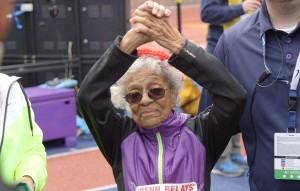 The world – well, 3.5 billion of us, at least — just spent 17 days watching highly trained, super-disciplined, extraordinary physical specimens show us what a human body can do. Those Olympic performances were both inspirational and aspirational, weren’t they? I don’t mean that watching Simone Biles inspired me to want to be Simon Biles, to do what she does. Ha. I mean that marveling at her performances might inspire me (us) to push ourselves, to embrace (or at least entertain) the notion that we can move forward in bold and astonishing ways. We might aspire to the attitude behind her performance, the fierce determination that we are not defined or limited by our past. Her story inspires us more than her (unattainable) physical prowess.
The world – well, 3.5 billion of us, at least — just spent 17 days watching highly trained, super-disciplined, extraordinary physical specimens show us what a human body can do. Those Olympic performances were both inspirational and aspirational, weren’t they? I don’t mean that watching Simone Biles inspired me to want to be Simon Biles, to do what she does. Ha. I mean that marveling at her performances might inspire me (us) to push ourselves, to embrace (or at least entertain) the notion that we can move forward in bold and astonishing ways. We might aspire to the attitude behind her performance, the fierce determination that we are not defined or limited by our past. Her story inspires us more than her (unattainable) physical prowess.
Now that we have celebrated the Olympics, and now that we’re sated with images of hard-bodies who’ve devoted most of their young lives to athletic performance, how about celebrating much older people (much older people) who have attained equally lofty heights of physical achievement. Consider those profiled in a recent special edition of New York Times’ “Well” blog.
Here’s a story about Anna Sofia Botha, 74, the coach of the South African runner who broke the long-standing 400-meter world record. The news media flocked to her (after all, a WHITE HAIRED LADY!!!), clamoring for interviews. Surprised, she replied: “The whole coaching scenario is an everyday way of life for me.” Gotta love it.
Or how about this story profiling a 100-year-old runner. Says Ida Keeling, who started running at 67, “Time marches on, but I keep going.”
Or read about Tao Porchon-Lynch, 97, a competitive ballroom dancer (she started at 80) and a yoga teacher, who says, “I haven’t finished learning.”
When we see Olympic athletes compete, we don’t dismiss their performances as “the exception that proves the rule” – the rule being that almost none of us look like they do and can do what they do. Instead, we enjoy their achievement and are motivated by it. Maybe we can work on adopting that same attitude about these older “outliers.”
These women (and many others — you’d be surprised how many others) are outside the norm, just like the Olympic athletes. Let’s not dismiss them as exceptions that prove the (well entrenched) “rule” about older people, the rule that states that old means frail, feeble and fragile; that old people live constricted, restricted sad little lives. How about, just as we admire those Olympians and are inspired by their stories, we enjoy the stories of world-class (older) women and embrace the attitude behind their achievements? How about that?
August 24, 2016 1 Comment
Vacation…or lack thereof
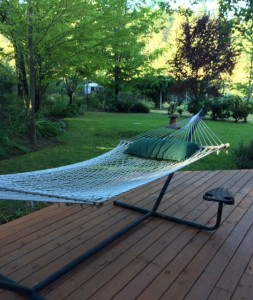 It’s the last half of August, the final chance for some of us to enjoy a summer vacation. Will we?
It’s the last half of August, the final chance for some of us to enjoy a summer vacation. Will we?
Maybe not.
Did you know that American workers get the least mandated, paid vacation time in the world. Zero, in fact. Employers in the U.S. don’t have to give their staff any paid leave – although some are paid for at least a few of our 10 national holidays. That means that many, many workers get no paid vacation. This is simply not the way the rest of the “first world” treats its workers. Just how many days of mandated, paid vacation do people get elsewhere? Here’s a partial list: Sweden, 41; Finland, 40; Lithuania, 39; France, Portugal, Iceland, 37; Austria, 35; Slovia, Croatia, Poland, France, 31; Italy, Belgium, Germany, New Zealand, 30; U.K., Australia, 28. And so on.
Maybe as an American worker you get vacation days…or maybe not. (One in four do not.) When I worked as a caregiver at an Alzheimer’s facility (part of research for a book I was writing at the time), none of the hourly staff got any paid vacation – or, for that matter, any sick leave. At another of my jobs, workers were entitled to 1 week after 1 full year of employment, 2 weeks after 2 years. And that was the max.
That’s bad. Equally as pitiful is the fact that full-time employees in the U.S., when they are given vacation time, take only half of their eligible days. And more than 60 percent report working while on vacation. (I cannot remember a vacation during which I did not work.) We work hard. And a lot. And on vacation (if we are lucky enough to get vacation and smart enough to actually take advantage of it). So that must mean we have the most productive work force on earth.
Uh, no.
Norway – which requires all employers to provide 25 days of paid annual leave — has the most productive work force. Luxembourg (also with a 25-day minimum leave) has the second most productive work force. U.S. is number 3 (yay, us!) but it’s worth noting that numbers 4-7 (Belgium, Netherlands, France, Germany) trail only ever so slightly in productivity while mandating a month of paid vacation for every worker.
I’ve written about this subject before, back in the spring when I returned from Austria where people eat more calories, consume more red meat and smoke more cigarettes than Americans…and are significantly healthier. One explanation (among many) is their national vacation policy. I thought it was worth writing again about the health effects of taking vacation while we still have a few weeks remaining in August. So listen up.
The landmark Framingham Heart Study – the largest and longest-running study of cardiovascular disease – found that men who didn’t take a vacation for several years were 30 percent more likely to have heart attacks compared to men who did take time off. And women who took a vacation only once every six years or less were almost 8 times more likely to develop coronary heart disease or have a heart attack compared to women who vacationed at least twice a year. Lack of vacation has also been linked to higher blood pressure, bigger waistlines and increased incidence of depression.
It’s easy to see how more work can translate into other unhealthy behaviors: more stress, unhealthy eating habits (eating on the run/ in the car, reliance on take-out and fast food), more time sitting in a chair, less sleep, less family time.
While it’s still summer, take a vacation!
August 17, 2016 8 Comments
Time, fast and slow
Time keeps on slippin’ slippin’ slippin’/ Into the future.
Yeah, what’s that about?
Why does time seem to speed up the older we get? Why did 8 weeks at summer camp when I was 12 seem like a lifetime, and last year – a full year – go by so quickly I barely registered its passing.
Time is weird, right? We have long striven to measure it with exactitude (from sundials to atomic clocks), but we all know the folly of objective time. Time is not objective. It is subjective. Time is experienced. Time is perceived.
And it turns out we experience and perceive it at a faster clip the older we get. Why? And what can we do to slow it down?
Our friends the neuroscientists have answers to both questions.
Our perception of time, how we experience (and remember) time, is dictated by how much information our brains need to process. When we feed the brain more information and expose it to more stimuli, the moment (the day, the summer) seems to last longer. We perceive it as passing more slowly. It is when we are bombarded with new experiences, and our brains are flooded with stimuli (that is, when we are younger, when every day presents a new experience), that we perceive time as moving slowly.
But, as neuroscientist David Engleman says (in a New Yorker profile): The more familiar the world becomes, the less information your brain writes down, and the more quickly time seems to pass. Or look at it this way: A mundane activity, a routine, gives us no new interesting stimuli to process. So when we look back on that moment (year), we can’t remember it distinctly, and we perceive it as zipping by.
You see where this is going, right? I have written so much about taking on new challenges, raising the bar on your own life, pushing yourself out of your comfort zone. It turns out that all this is not just a fun, exciting and productive way to live life, it also slows time. You are feeding your brain more new stimuli to process. Doing something new means your brain has to pay attention. When it pays attention, your perception of time is altered.
Time does not keep on slippin slippin slippin away.
July 20, 2016 No Comments
Size matters
How is it that the Austrians consume a meat-heavy, bread-heavy, vegetable-light diet, smoke at almost two-and-and-half times the rate as we do … and are healthier than us? And how is that the French breakfast on croissants and pain au chocolat, slather their baguettes with runny Camembert while slicing off slabs of fois gras – and are healthier than us?
We want there to be one answer – red wine, a magic supplement, a secret diet – so we can latch onto it and transform ourselves overnight into a healthier nation. It’s not that easy. The fact is that Europeans live very different lives than Americans, and their health relative to ours is a product of the sum of these many differences.
So far I’ve written about two major differences that have nothing to do with diet: Our car-dependent lives compared to their walking/ biking culture, and our lack-of-vacation culture compared to their generous days of R&R. Here’s another dramatic difference that does have to do with what we eat: P o r t i o n s i z e
America’s portion sizes are larger than the rest of the world’s, with more calorie-dense foods making up those portions. (Study after study has shown that when people migrate to the United States, they gain an average of 5-9 pounds within weeks of settling in.)
The differences in portion size have been noted, studied and widely commented on – both by travelers and by health and nutrition organizations. The American Institute for Cancer Research points out that the average croissant in a Parisian bakery weighs slightly more than an ounce. At Starbucks, the croissants are 3.5 ounces. A “small” ice cream at Cold Stone Creamery is 5 ounces. A scoop of gelato throughout Europe is 2.5 ounces. A “large” pizza when ordered in the US is about 2” bigger in circumference than a “large” in Germany. A “small” soft drink bought in a European fast food restaurant has is 8.5 ounces. In the U.S. ordering this size gets you 16 ounces. Unheard of in Europe is the “double gulp” size soft drink that is 64 ounces – that’s a half gallon, folks (and more than 600 calories)
Portion sizes in the U.S. have grown consistently… some would argue alarmingly. Did you know that the Hershey bar debuted at 0.6 ounces? Today the smallest “single” bar size is twice as big, with sizes up to 8 times as large. Today’s typical bagel up to 5 times larger than the bagel of yore. When fast food hamburgers were introduced, they were the size of those now included in kid meals.
 The link between big portion sizes and overeating is explored in depth in the book “The End of Overeating” by David Kessler (sorry to say, no relation). The not-so-surprising conclusion from various studies:
The link between big portion sizes and overeating is explored in depth in the book “The End of Overeating” by David Kessler (sorry to say, no relation). The not-so-surprising conclusion from various studies:
Give them a lot, and they will eat a lot.”
Which we do.
May 11, 2016 1 Comment

